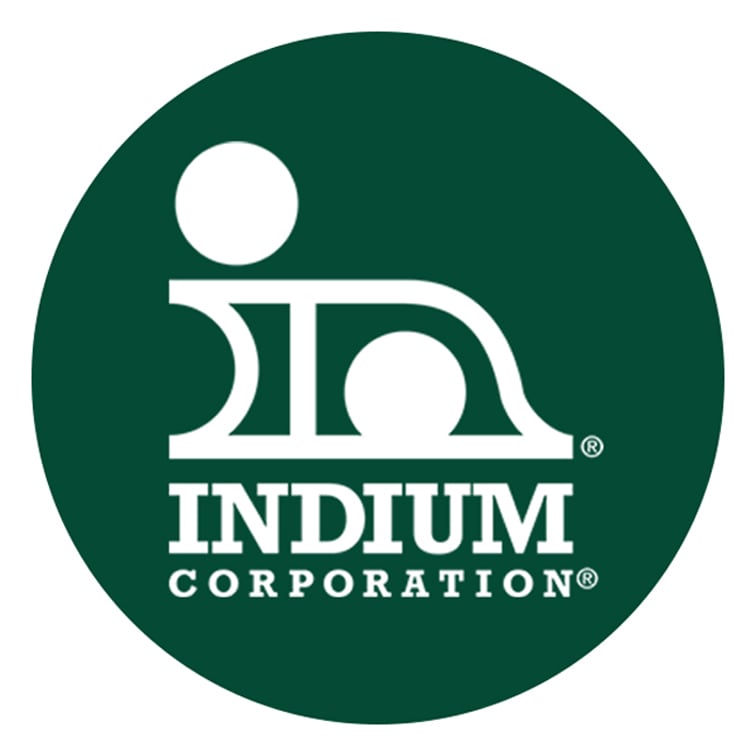Folks,
I was getting a little cabin fever, so I thought I would go for lunch at Simon Pearce. The ambiance there always relaxes and refreshes me. So, the maître de squeezed me in at a small table looking over the waterfall. The restaurant was in an old mill building and the power from the waterfall was used to run the weaving machines. Now it powers an electric generator.
As I sat down, I hear a cheerful voice from an attractive young woman hailing me.
“Dr. Ron, come and sit with us,” Ivy University Professor Patty Coleman exclaimed.

Figure 1. Professor Patty Coleman and a colleague performing an audit.
Professor Patty was sitting with Maggie Bensen and Sue March. At their invitation, I joined them.
“Wow, I feel like I am dining with royalty!” I teased.
The three looked a little confused, so I explained, “I followed your adventures in a two year series sponsored by Indium Corporation and iConnect007.”
We chatted a bit about their adventures, and finally, I asked Sue, “You were thinking of pursing a graduate degree in math, but I sense you might be pursuing one in engineering?”
Sue turned a little red and then answered, “I love math, but the program suggested for me was quite theoretical. Professor Patty suggested I use my math skills in electronic assembly. Maggie is sponsoring me to get a PhD in engineering at Ivy U!” As she said this, her voice quavered and she was choked up a little.
Everyone was quiet for awhile and then we chatted about many things, we all seemed happy to pick each other’s brains.
Finally, I asked Patty, “Professor Patty, you have spent years helping people improve their assembly processes. What is the biggest mistake you think an assembler can make?
Not hesitating an instant, she responded, “Considering solder paste as a commodity.”

Figure 2. Solder Paste is not a commodity
“I agree! Can you expand on this thought?” I asked.
Patty pulled out her her smartphone and put iton the table. “My smartphone cost almost $1,000, yet it contains less than $1.00 of solder paste. Despite this, if the solder paste is poor, it could ruin the entire smartphone. The choice of saving a few cents on a cheaper, poorer-performing solder paste could easily cause the smartphone could be ruined." Patty paused. "Sue, why don't you tell Dr. Ron how many functions the solder paste must perform to achieve successful assembly?” Patty instructed.
Sue groaned and then chuckled, “Professor Patty makes us memorize a blog post you created on the topic, Dr. Ron. The answer is 15.”
“I only vaguely remember that post. You’re joking about memorizing it right? I asked.
“Well," Sue smiled, "let’s see if I get it right!
"Solder paste is not a commodity, and it is important to understand why. Solder paste is likely the most complex material used in any manufacturing process. I think most people know that solder paste is a combination of solder powder and flux. At first glance, it seems quite simple. However, even the solder powder is not a commodity. In superior solder paste, the powder size distribution is well controlled, the solder particles are spherical, and they are not oxidized. Poor solder powder has powder particles that are non-spherical and oxidized.
Many of you may be familiar with type three, type four, and type five powders. All of these powders have certain size distribution requirements. Superior solder paste will have powder size distributions consistent with their requirements. Starting with a poor solder powder makes guaranteeing the right powder size distribution difficult, and not all fluxes are equal.
The flux is a complex mixture of solvents, activators, gels, and oxygen barrier components. It has many important tasks to perform. The solvents dissolve the other chemicals while the gel compounds give the solder paste its rheological properties. The rheological properties are important for the first step in the PCB assembly process: stencil printing.
Rheological properties are the thickness or viscosity properties of the paste and must be just right to perform well. A solder paste must be thixotropic, meaning that its viscosity decreases sharply as the paste is forced through the stencil apertures, but the viscosity increases dramatically when the solder paste is at rest right after it's printed. The result is a crisp, sharp solder paste deposit that maintains its shape after printing.
Next, the solder paste deposit must maintain its shape and not slump. After the components are placed on the printed circuit board, they must be held by the solder paste. This property is called "tack". During the reflow process, the solder paste must dissolve any oxides on the component leads and PWB pads. This task is the main responsibility of the activators. However, the oxygen barrier chemicals must protect these newly oxide-free surfaces through the reflow process.
Of course, one wants to assure that the quality of the solder joint is acceptable, but long-term reliability is also a concern. The solder joint must pass thermal-cycling and drop-shock testing to assure mechanical reliability. In addition, an important thing to consider is that all 15 of these features must be very good-to-excellent for a superior solder paste. If a solder paste is terrific at 14 of the 15, but was poor at, say, electrical surface installation, it would be unusable.”
“Wow!” I responded. I was very honored and touched.
After lunch, we wished each other well and promised to keep in touch.
Cheers,
Dr. Ron
Note: All of these characters are fictional as is Ivy University. Professor Parry Coleman just celebrated 15 years. Simon Pearce restaurant is real and is one of my favorites.


